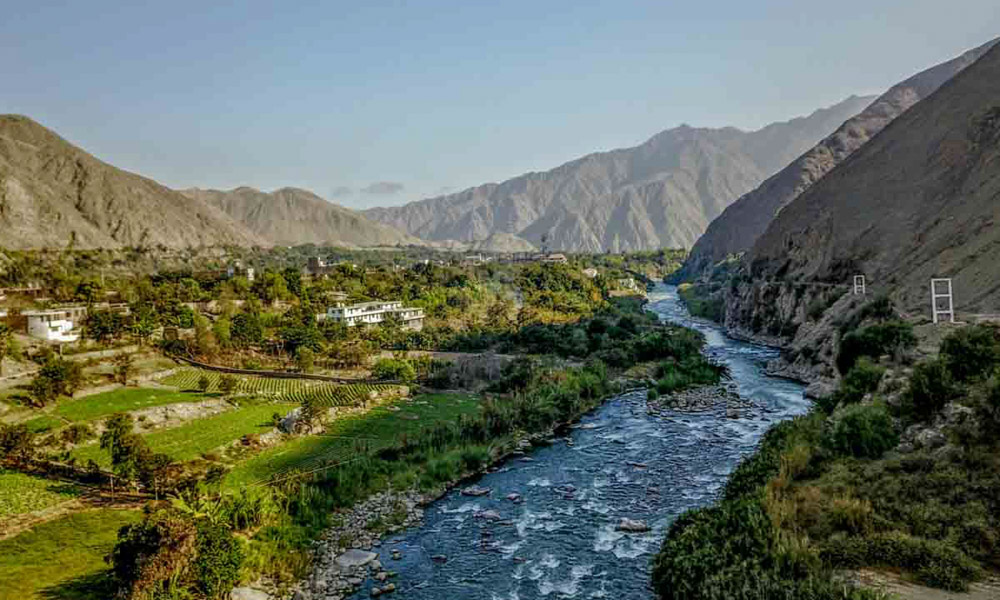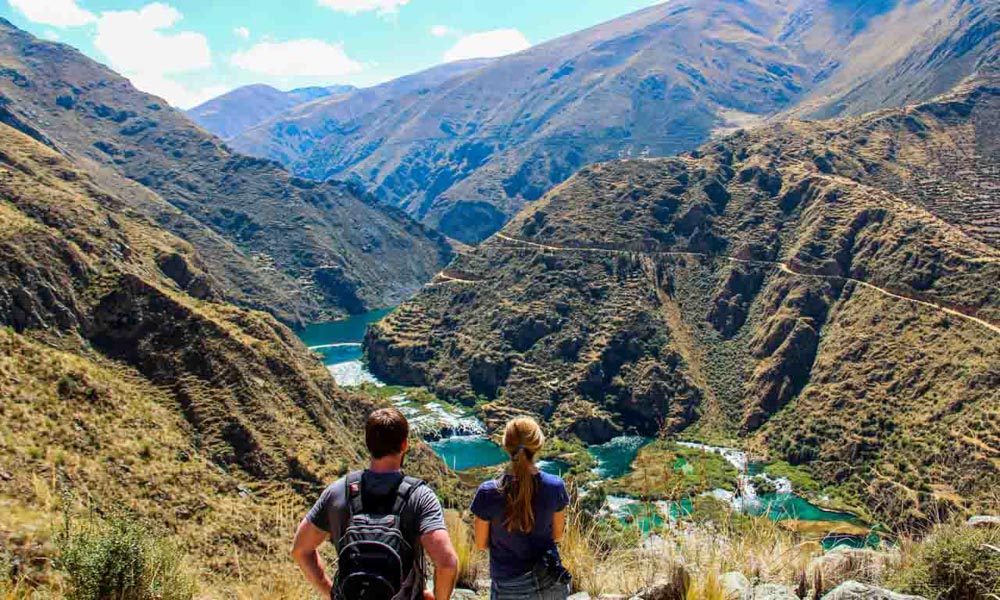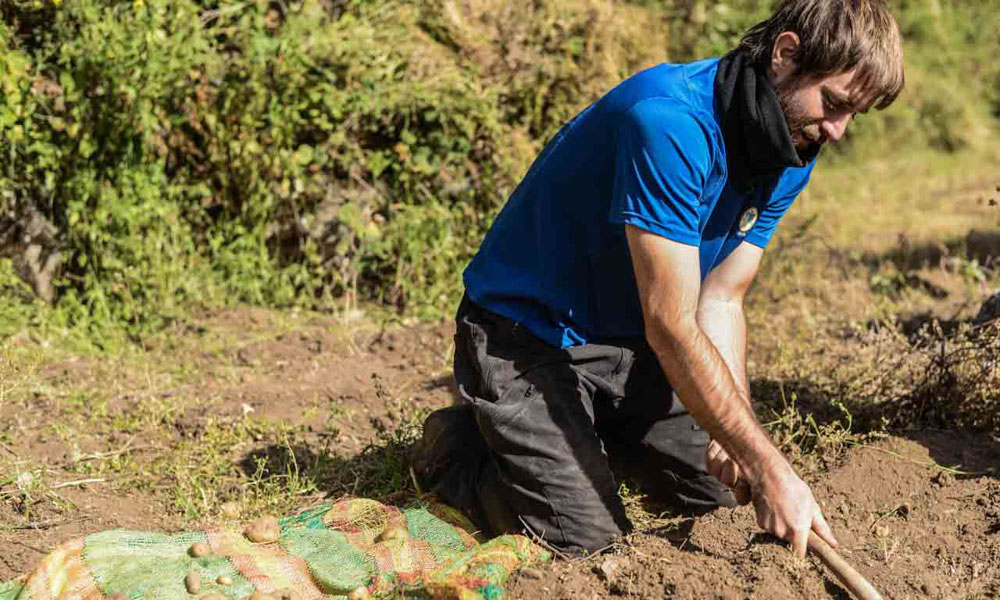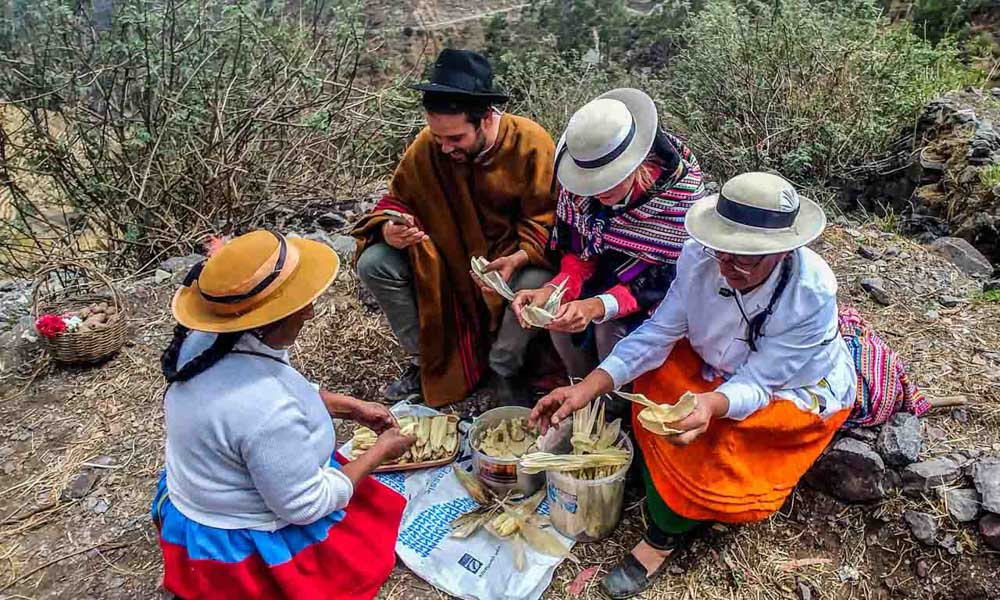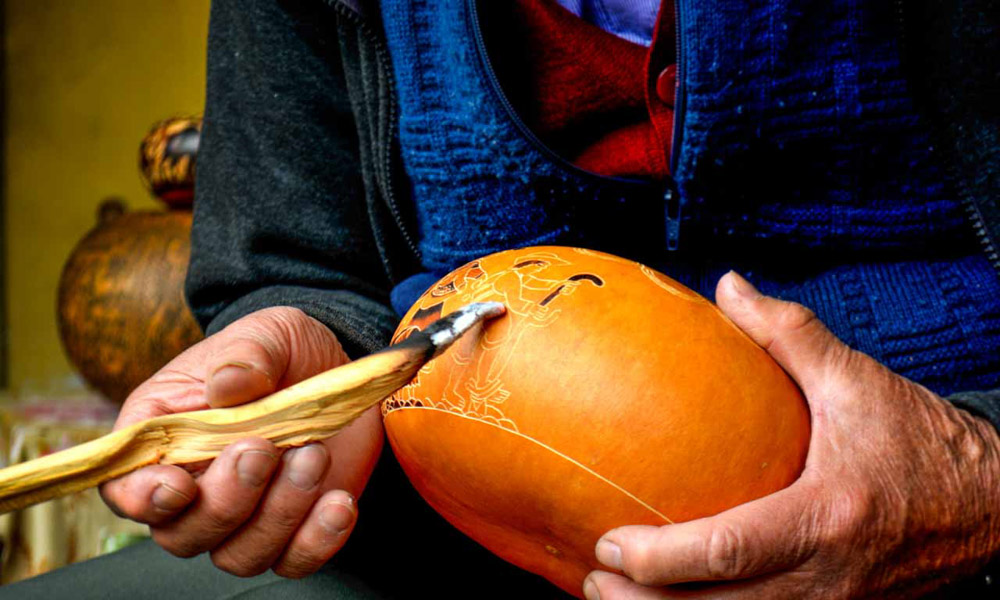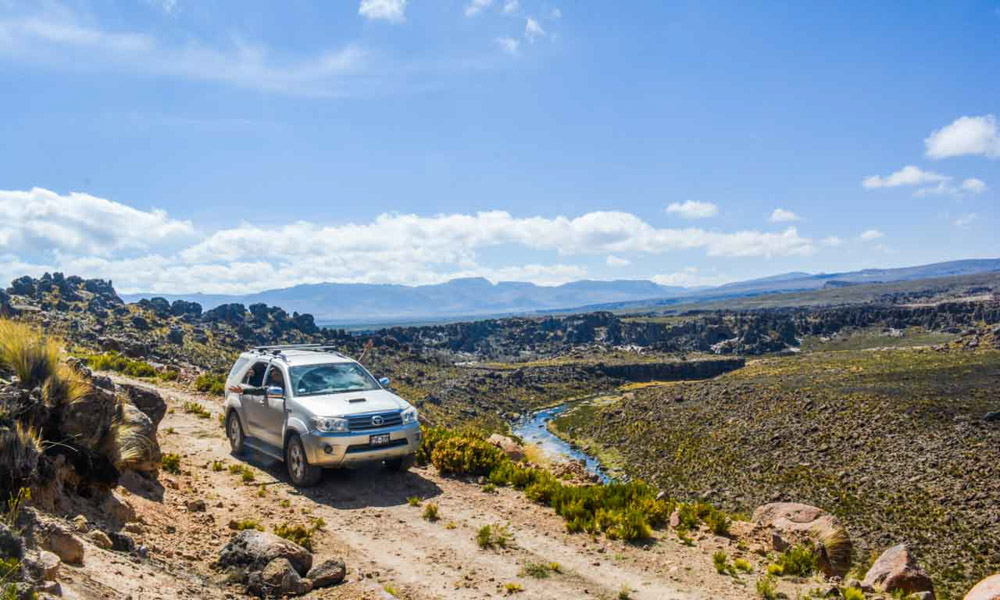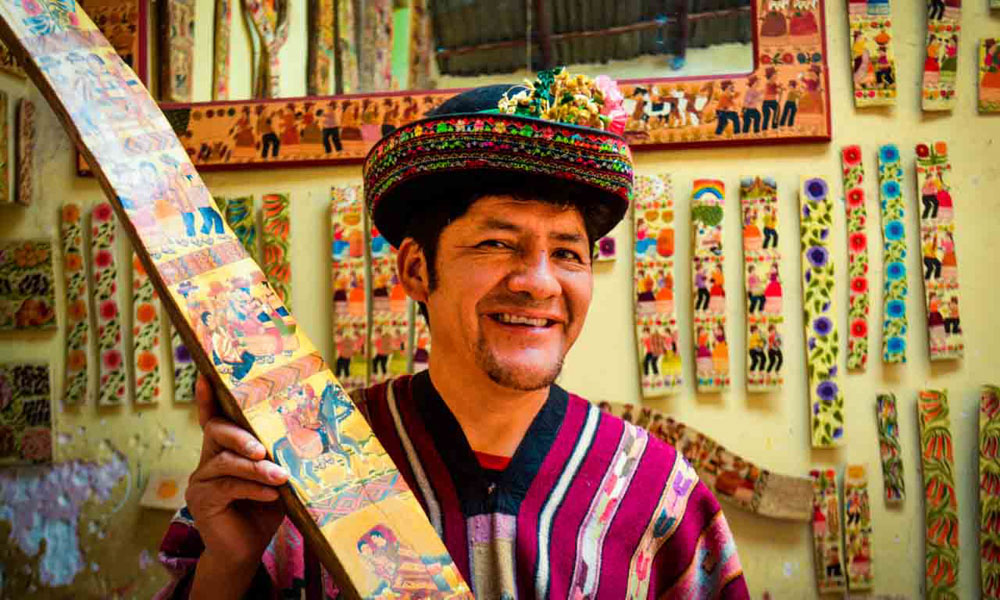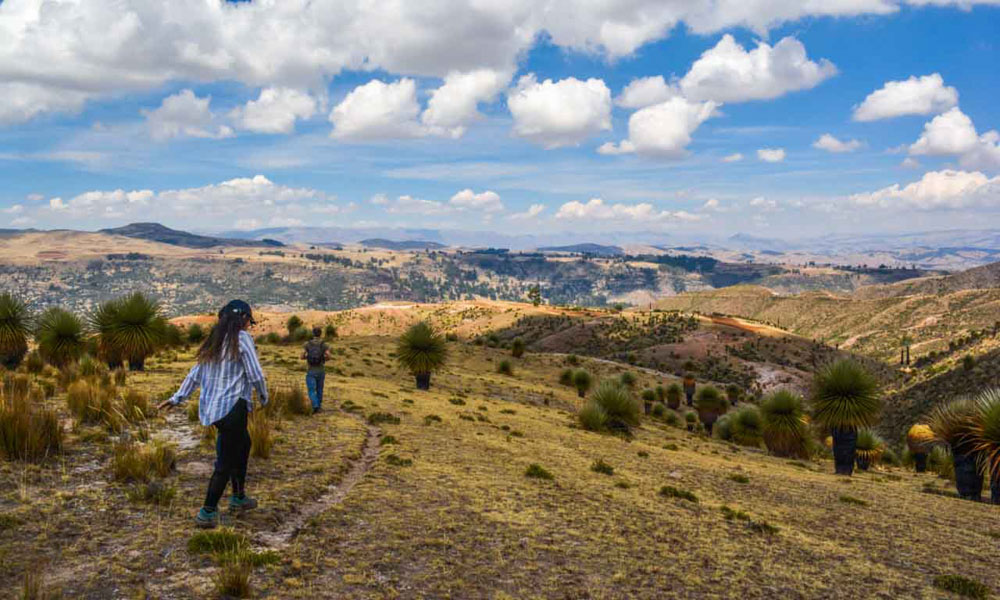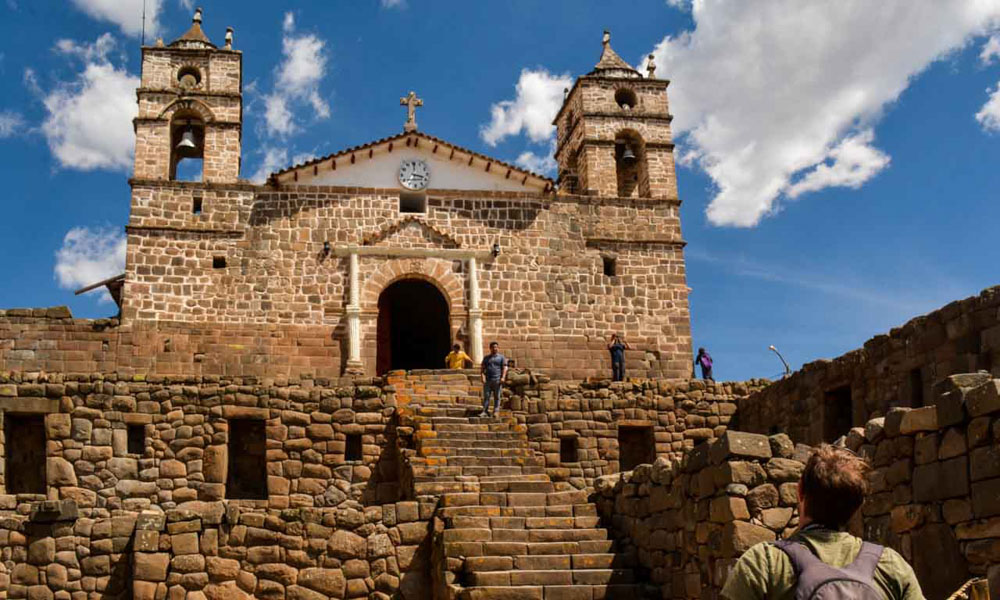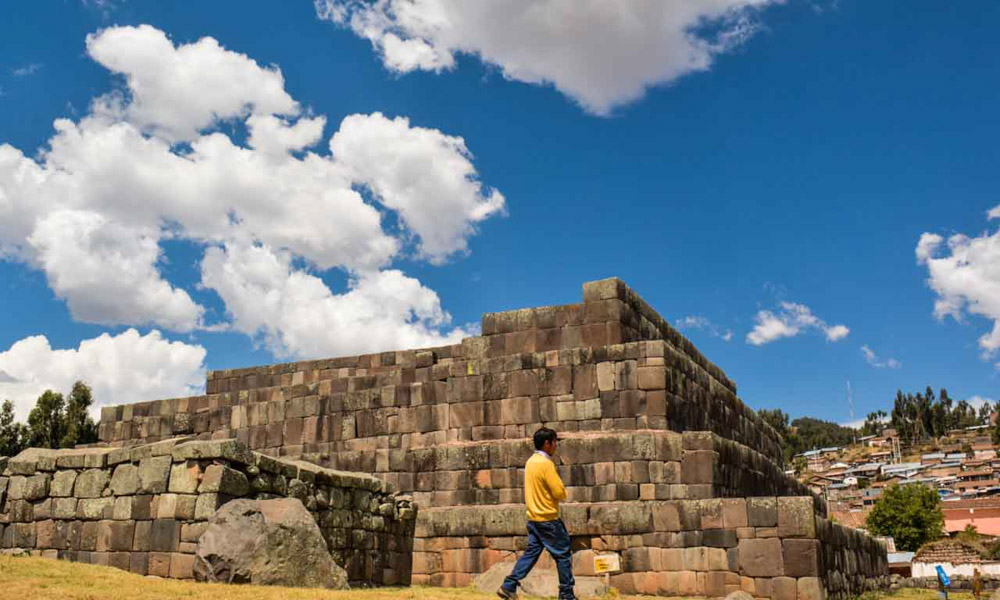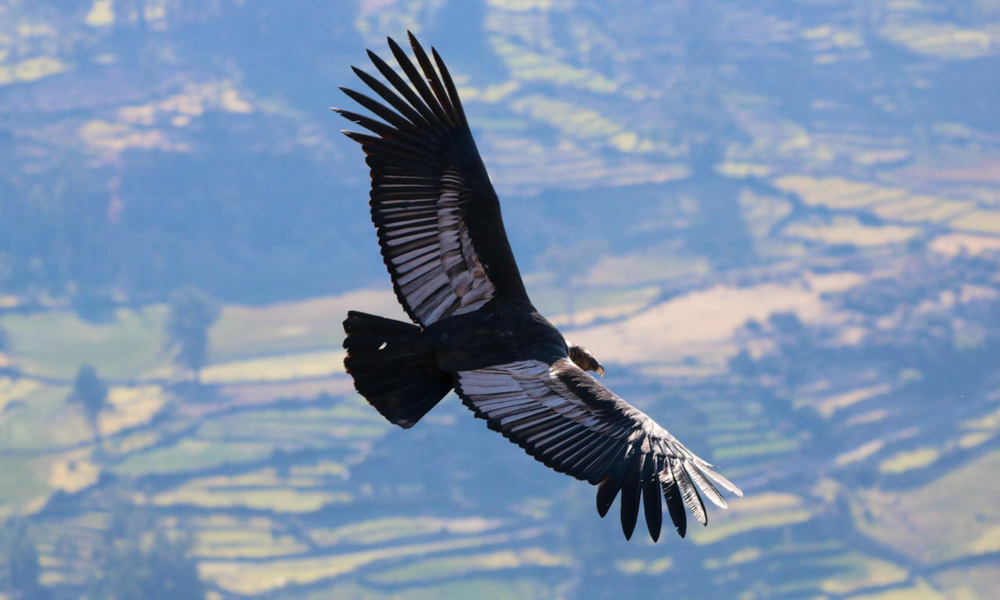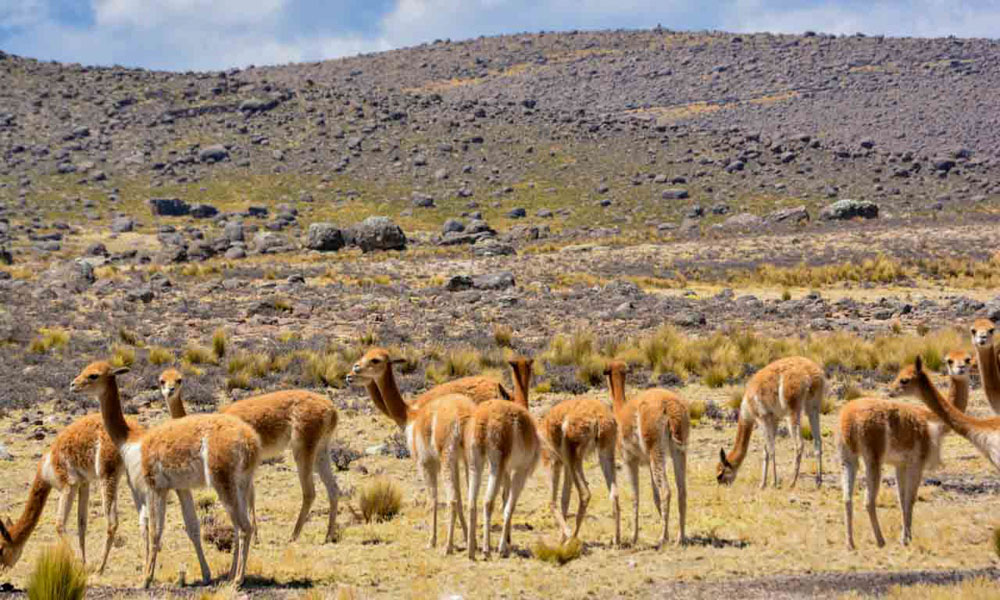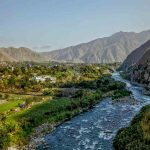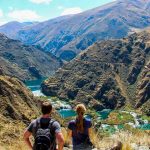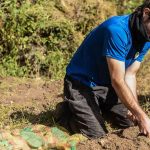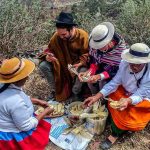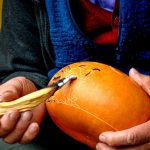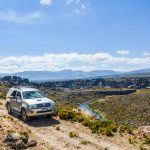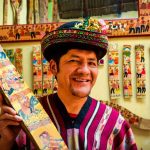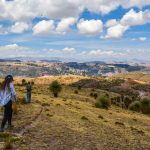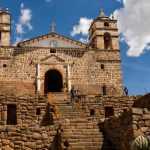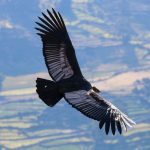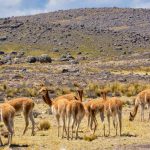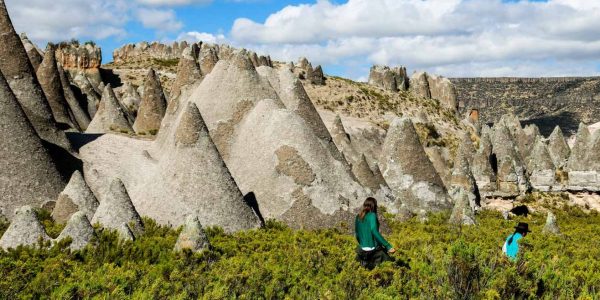Overview
Many destinations around Peru hide incredible gems among their vast territory. Some of them are popularly visited by hundreds of travelers, looking for a beautiful landscape and imposing sites. However, many other places remain unknown in the expectation of explorers willing to give up some comfort to have a lifetime experience! Following this off-the-beaten-path itinerary, you will have the chance to travel around the Peruvian Central and Southern Andes. From Lima, Pampas to Ayacucho and Nazca, you’ll be able to walk within lagoons and waterfalls, hike along ancient Inca Trails and encounter Andean Condors just above your head. This trip is ideal for second-time travelers to Peru or people looking for unconventional and authentic destinations in the country.
Why we love this trip!
- Hike through lagoons and waterfalls in the Andes of Lima.
- Discover a Puya de Raimondi Forest in Vischongo.
- Observe the flight of Andean Condors at Mayobamba Canyon.
Itinerary day-by-day
Our Central Andes adventure begins today with a 3-hour drive to Lunahuana, a riverside village in the always sunny Cañete Valley. Once at our hotel, overlooking the Cañete river, we can relax and try some local cuisine (Lunahuana is famous for its river shrimp). If we arrive early enough and you fancy it, Cañete river is an excellent place to try out some easy-level rafting. We suggest having an early night today as we will begin our journey into the Andes early tomorrow.
Early this morning, set off into the Andes to Huancaya, our base town, to explore the surreal Nor Yauyos Cochas Scenic Reserve. It will be a beautiful 5-hour drive into the mountains. On route, we’ll see how the arid coastal surroundings slowly change into colorful landscapes. Nor Yauyos Cochas is one of the most breathtaking places you will ever see in Peru. Its meandering river forms a continuity of turquoise lagoons and waterfalls that flow across fields, bush forests, and towns. This afternoon, we will visit the village of Vilca, from where we’ll begin a one-hour hike to the spectacular Papacocha waterfall. Locals know this area as Love Forest Cascades because of its romantic beauty.
Once the sun warms us up this morning, we’ll begin a soft hike to the Carhuayno falls and Hualhua lagoon. We’ll be taking a local path following the emerald lagoons and waterfalls formed by the Cañete river. It’s quite common to bump into locals working in their fields and terraces, some of which go back to pre-Inca times and are still in use. We’ll first reach the Carhuayno falls, where we can rest. Next, we can continue walking for another 20 minutes to reach the Hualhua lagoon, from where we have fantastic views of the valley. If we are lucky and the little boat of the community is available, we’ll be able to paddle in the lagoon to reach more amazing falls on the other side.
The village of Laraos is a unique Andean town surrounded by thousands of terraces that make it look like a gigantic amphitheater. At this amazing location, we’ll take part in a Pachamanca, a traditional culinary experience in the mountains of Peru. Pachamanca is a cooking technique where the food is prepared underground using hot stones and leaves to separate the ingredients from the soil. This dish is a very symbolic meal in which we interact with the Pachamama or Mother Earth. We’ll be participating in the entire process, from harvesting to finding the right herbs and stones. Finally, we’ll enjoy this farewell meal before continuing our journey to our next destination, the Mantaro Valley.
The Mantaro Valley is one of the most extensive and most fertile valleys of Peru. It is also home to some of our most famous artisans. This morning we’ll first visit the Ocopa Colonial Temple, from where missionaries set of to evangelize the Peruvian Amazon. Then we’ll head to Cochas Chico, a small village where we will meet Eulogio Medina, one of the most recognized and talented artisans in the region. He will show us how he carves and burns designs into dried squash shells to produce fantastic pieces of art we call Mates Burilados. After the visit, we continue to Pampas, where we’ll be staying at the Pamuri Andes Lodge, a beautiful country manor surrounded by eucalyptus forests and farms.
Today, we will enjoy the Andes to their fullest! We’ll start our day with a hike along a segment of the Inca Trail located in the Atocc community. This three-and-a-half-hour trail is part of the 32,000 km road network built by the Incas, which we call Qhapaq Nan. These roads crossed mountains, deserts, and forests connecting an Empire that reached from southern Colombia to northern Chile and Argentina. The afternoon is free to enjoy the surroundings or, if you wish, join any of the local activities, Pamuri Andes Lodge. You can choose from yogurt and cheese making, tree climbing, mushroom harvesting, or a warm and cozy campfire. You can request any of those activities at the lodge.
Pamuri Lodge produces its milk, cheese, yogurt, and more, so breakfast here is quite a treat! After a tasty breakfast, we must say goodbye to hosts at Pamuri and start our journey to our next destination, Ayacucho.
At this point, we will have crossed Junin, Huancavelica, and Ayacucho, three regions in the heart of Peru’s Andes that are rarely visited by travelers. However, they are home to much of our local culture and some fantastic scenery. From Pampas, we must drive 220km through the mountains. It will take us most of the morning. Upon arriving at Ayacucho, we’ll check into our hotel in the city’s Main Square and have the rest of the day to rest and self explore.
Ayacucho is well-known for its fantastic artwork. After breakfast, we’ll meet Marcial Berrocal, a skilled artisan from Sarhua, a town where the tradition of gifting painted beams to the newly wedded continues. These beams are a symbol of friendship and depict their families and local activities. Marcial will show us how to make small Sarhua beams, which we can then take with us. Afterward, we head to Quinua, a small town famous for its pottery. Here, we will visit the Limaco workshop to learn how to prepare their traditional pieces. Finally, we return to Huamanga, and if you feel like it, we can visit the Joaquin Lopez de Antay Workshop and Museum to learn about the famous Retablo Ayacuchano.
South of Ayacucho, we find Vilcashuaman, an area that is home to some of the most exciting destinations in the region. We’ll be exploring this location today. First, we head to the highlands of Vischongo to visit the vast forest of Puyas de Raymondi. Puyas are endemic plants that only grow on shrubby and rocky slopes in the highlands. Some of them can grow up to 12 meters, have 8000 flowers, and produce over 6 million seeds! We then continue to Vilcashuaman village, where we’ll find the remains of one of the most important Inca administrations that still stands. An Inca building you see here and won’t find anywhere else is the Ushno, an imposing Inca stone pyramid that commands the village.
Andamarca, our next destination, is a small village enclosed by the mountain’s history-rich Sondondo Valley. To reach it, we must cross some dramatic Andean scenery on a five-hour journey. On route, we will make a stop at Pachapupum, a bizarre thermal formation in the shape of a volcano. There are some rustic but beautiful thermal springs here, where we can relax for a while. We’ll be arriving in Andamarca this afternoon and check in to our basic but lovely hotel in the center of the village. Hundreds of pre-hispanic terraces surround this town that locals still rely on for agriculture. Tonight, we will enjoy a marvelous display of the local culture by traditional Danzaq or Scissors dancers.
A 30-minute morning drive will take us to the Mayobamba Viewpoint. From here, we have commanding views of the valley and steep surrounding mountains that make this site perfect for Andean Condors. We enjoy picnic breakfast here while gazing at these birds flying right in front of us. A little later, we’ll set off on a 3-hour hike to the top of the mountain terraces surrounding Andamarca. As we walk, we’ll learn about the prehispanic people that inhabited the area and the Inca occupation. Finally, if you still have energy, we can visit Caniche, a large pre-Inca site located only 5 minutes away from the town square. To top it all off, we’ll have a farewell pizza dinner tonight.
We must leave the Sondondo Valley this morning and descend to the coastal deserts of Nazca. One of the highlights of the route will be Pampas Galeras, a National Reserve home to the world’s largest wild vicuña population. As soon as we spot them, we’ll make some stops to have a closer look at these interesting South American camelids. As we get closer to the coast, we’ll be able to see Cerro Blanco, a 2000-meter-high white dune that stands out among the arid mountains of this area. Before arriving at Nazca, we’ll visit the Aqueducts of Cantalloc. This underground aqueduct system was built by the Nazca peoples to irrigate the desert in 300 BC. It is still in use nowadays.
After a marvelous journey exploring the Central Andes of Peru, we deserve to relax today. For this reason, we’ll take you to Paracas bay, where we will check you in at your beachfront hotel with top-notch facilities for you to unwind after our grand adventure. If you wish to see a little of the area, we can enter Paracas reserve this afternoon to have a look at some fantastic ocean viewpoints.
You will have most of today to relax, and then, at the coordinated time, we begin our four-hour drive back to Lima airport to board your international flight back home.
What’s included?
- Personalized attention before and throughout your trip.
- Brief presentation prior departure.
- All transfers and transports.
- Entrance fees.
- Local English-speaking guide focused on personalized trips.
- Accommodation at well-thought hotels according to your travel style.
- Mentioned meals.
What’s not included?
- Services not specified in the program, extras & tips.
- Domestic flights.
- International flights.
- Travel Insurance.

